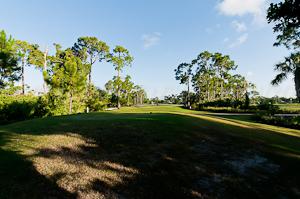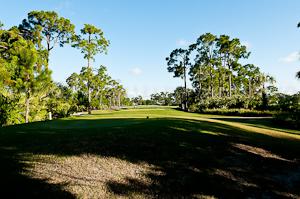 Next is the12-24 lens set at 12. You can see how much more is included in the image. This can be good or a bad thing. You do need to watch out for distortion on each side of the image almost a bending in effect. I use this lens for some landscapes and during wedding receptions. Images taken during the reception can be fun and include lots of the guests dancing from a different perspective. You can also see that there is something on the grass but it is a little small to know what it is for sure.
Next is the12-24 lens set at 12. You can see how much more is included in the image. This can be good or a bad thing. You do need to watch out for distortion on each side of the image almost a bending in effect. I use this lens for some landscapes and during wedding receptions. Images taken during the reception can be fun and include lots of the guests dancing from a different perspective. You can also see that there is something on the grass but it is a little small to know what it is for sure. Next is the 70-200 2.8 lens. It's one of my favorite lenses and it's also a versatile lens. I use it for portraiture, wildlife, intimate landscapes and during the wedding ceremony in low light; especially in low light when a flash is not allowed.
Next is the 70-200 2.8 lens. It's one of my favorite lenses and it's also a versatile lens. I use it for portraiture, wildlife, intimate landscapes and during the wedding ceremony in low light; especially in low light when a flash is not allowed.
Now we come to the 80-400 lens. It's a little slower but if you're shooting at a high ISO in bright sunlight, it will perform really well for you. It's a really good inexpensive (I use the term loosely) 400 length zoom and a great lens for wildlife. You should always use your legs to get as close as you can then use the zoom to be selective. The one caveat to getting closer with your feet is safety, not only yours but also the animals. If you're in a national park and you decide you want your wife to take a picture of you feeding Yogi the bear, then all bets are off. That is when Darwin's theory of survival comes into play. So remember, I am not saying to shake Yogi or Smokey's hand. In this image it is quite easy to see that we have been seeing the golf courses maintenance staff at work.
 The last lens is one I use a lot, it's my 17-55 2.8 zoom. I use this for environmental portraiture, some nature, some wildlife (when I am close enough to the subject) and it's really good for candid street photography, especially when you master shooting from your hip. This was shot at 17mm.
The last lens is one I use a lot, it's my 17-55 2.8 zoom. I use this for environmental portraiture, some nature, some wildlife (when I am close enough to the subject) and it's really good for candid street photography, especially when you master shooting from your hip. This was shot at 17mm. So we have a real simple comparison of five different focal lengths lenses. If anyone would like me to explore any particular lens in a little more in depth, please just comment on which lens it might be.If people would like to submit their own images for a critique, I would be willing to have a day where I critique a few images. Let me know!!
So we have a real simple comparison of five different focal lengths lenses. If anyone would like me to explore any particular lens in a little more in depth, please just comment on which lens it might be.If people would like to submit their own images for a critique, I would be willing to have a day where I critique a few images. Let me know!!

